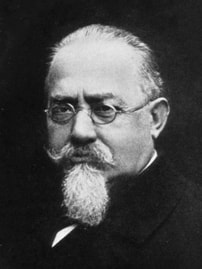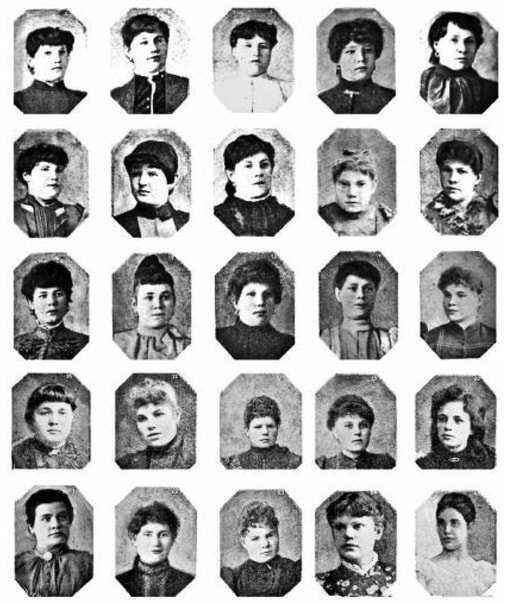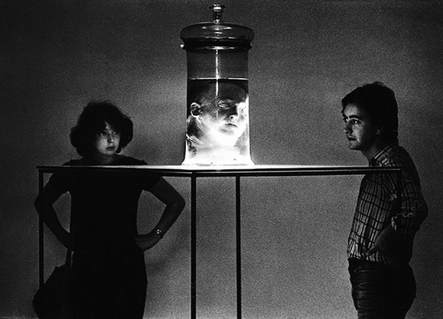|
Lucy A Smyth is an IT consultant, who runs UglyMugs.ie, an online sex worker safety scheme. UglyMugs.ie improves the safety of sex workers and reduces crime, by bringing sex workers together to share information with each other about potential dangers. It’s available as a website and via mobile applications for Apple/iOS and Android. Thousands of sex workers rely on UglyMugs.ie every day to improve their safety. Since 2009 sex workers have made over 14,000 reports to UglyMugs.ie. Lucy’s other interest is modern history, especially around sex work, policing and other issues relating to ‘fallen women’ in the UK and Ireland. You can follow her at @reclusiveblonde  Cesare Lombroso (1835 – 1909) was an Italian physician famous for his work in criminal anthropology. He put forward the determinist theory that criminal behaviour is caused by biological factors, that criminals are ‘born criminals’, and innately different to non-criminals. Although most of Lombroso’s work has been scientifically discredited, his influence has proved to be so considerable that he is regarded as the ‘father of criminology’. Nowhere can Lombroso’s legacy be seen more clearly than in the treatment of female offenders. The Criminal Woman, the Prostitute and the Normal Woman Lombroso’s seminal text, L'Uomo Delinquente (The Criminal Man), first published in 1876, sought to identify the physical characteristics that he argued set criminals apart from non-criminals. He argued these features were atavistic, like a throwback to a more primitive stage in human evolution. Already famous, in 1893 Lombroso (and his research assistant Guglielmo Ferrero) went on to publish the first criminological treatise on women, La Donna Delinquente, la Prostituta e la Donna Normale (The Criminal Woman, the Prostitute and the Normal Woman). Lombroso argued that all women were inferior to men, and naturally influenced by their biology and moral deficiency. He said although female born-criminals were fewer in number than their male counterparts they were in fact more savage. "The born female criminal is, so to speak, doubly exceptional, first as a woman and then as a criminal. This is because criminals are exceptions among civilized people, and women are exceptions among criminals… As a double exception, then, the criminal woman is a true monster." (Lombroso and Ferrero, 1893, cited in Hahn Rafter and Gibson, 2004, p. 8) Lombroso closely equated female deviance with female sexuality. He divided women into three categories; prostitutes, criminals, and normal women. He asserted that prostitutes were like a species separate not only to law-abiding women but also to other criminal women. Prostitution was, he said, women’s natural form of retrogression, and he found the prostitute more threatening and atavistic than the non-prostitute criminal woman. Lombroso's work does not acknowledge the social conditions under which prostitution takes place, instead he focused on what he regarded as the prostitute's abnormal sex drive and physiological traits. He argued that, though they may try to conceal it with make up, prostitutes had numerous abnormalities of the skull and of body. He argued they were shorter, fatter, and more masculine than honest women. He went on to reason that other groups of women, like lesbians, were actually a subset of prostitutes. Lombroso’s Lasting Impact Sellin said of Lombroso, “Any scholar who succeeds in driving hundreds of fellow-students to search for the truth, and whose ideas after half a century possess vitality, merits an honourable place in the history of thought.” (Newburn, 2013, p. 124) Wolfgang said, “In the history of criminology probably no name has been eulogised or attacked so much as that of Cesare Lombroso.” Garland argues that for much of criminological history one of the two most significant streams of criminology has been the ‘Lombrosian’ which continues to be concerned with identifying the characteristics of criminals. (Newburn, 2013, p. 123) Rafter describes Lombroso’s work as a “magnificent tangle of brilliance and nonsense.” (2013, p. 196) An English language version of Lombroso’s book on women, The Female Offender, was published in London and New York in 1895. Hahn Rafter and Gibson (2004) say Lombroso’s work on female offenders has had a greater long-term impact on the study of female crime than his theories of male crime ever exerted. Indeed, Lombroso’s work on women greatly influenced interpretations of female crime until the 1970s, whereas, in contrast, Lombroso’s book on male offenders was already going out of fashion as an explanation for male crime when it finally appeared in English by 1911. Scientific study promoting theories that prostitution was caused by biological factors did not end with Lombroso. For example, the Danish physician, Tage Kemp, published Prostitution, An investigation of its causes especially with regard to heredity factors in English in London in 1936. He too argued prostitution was a biological phenomenon. There was a distinct lack of research into female deviance until the 1970s, something Heidensohn drew attention to in 1968. (1968, cited in Newburn, 2013) Valverde (2013) says in the mid-twentieth century that women offenders were still the focus of a criminological gaze concerned primarily with their bodies and reproductive capacities. In the 1970s feminist criminologists like Klein (1973) and Smart (1976) began drawing attention to the sexist legacy in criminology that Lombroso’s work on female offenders had left behind. Heidensohn argues that Lombroso’s work had a significant impact on how women are treated in the criminal justice system. (2002, cited in Newburn, 2013) In recent years, there has been a surge of new interest in Lombroso. Controversially, there has even been new scientific attempts to identify criminals by facial recognition (Valla, Ceci and Williams; 2011, Wu and Zhang, 2016). In 2004, an adequate English translation of Lombroso’s treatise on women was finally published by Hahn Rafter and Gibson, with an accompanying editor’s introduction putting the place and time of Lombroso’s work into context. Scholars are also uncovering more and more evidence of Lombroso’s influence on explanations for female behaviour. Analysing how Lombroso’s work reverberated throughout Anglo-American criminal justice systems, Rafter (2013) points to the examples of psychiatrists explaining female crime such as shoplifting in terms of sublimated sexuality and girls arrested for delinquency automatically being given vaginal exams to determine their virginity (Chesney-Lind 1973, cited by Rafter, 2013). The Father of Criminology: Propping up the patriarchy Lombroso’s work also had consequences for women more generally. He didn’t invent sexism, but, as Rafter (2013) argues, he scientifically affirmed the idea of women being inferior to men and undercut efforts for female emancipation. His pathology of all women as biologically immoral authorised more medical and legal interventions into women’s lives. Still today, female offenders can be considered void of agency and reduced to their sexuality. Crude and contemptible as Lombroso’s work seems today, it clearly had a profound influence on Western thinking about the causes of criminal behaviour, especially female criminal behaviour. If nothing else, Lombroso was good at self-promotion. Knepper and Ystehede (2013) compare Lombroso to other Italian ruins, saying he holds a romantic sway over the criminological imagination. However, perhaps quite appropriately, the actual remains of Lombroso are now floating in a jar at the Lombroso Museum in Turin alongside his vast collection of human specimens. Bibliography
Cagoni, R. (1978) Bologna, Italy, 1978. Criminologist Lombroso’s Exhibition [photograph]. In: romanocagnoni.com [online]. Available from: http://www.romanocagnoni.com/wp-content/uploads/2014/01/042.jpg [Accessed 15 May 2017]. Garland, D. (1994) ‘Of crimes and criminals: The development of criminology in Britain’, in Maguire, M., Morgan, R. and Reiner, R. (eds) The Oxford Handbook of Criminology, 1st ed., Oxford: Oxford University Press, pp. 17-68. Hahn Rafter, N. and Gibson, M. (2004) Editors’ Introduction. In: Lombroso, C. and Ferrero, G. (1893) The Criminal Woman, the Prostitute and the Normal Woman. Translated from the Italian by Nicole Hahn Rafter and Mary Gibson. Durham: Duke University Press, pp. 3-34. Kemp, T. (1936) Prostitution, An investigation of its causes especially with regard to heredity factors. London: William Heinemann. Klein, D. (1973) The Etiology of Female Crime: A Review of the Literature. Issues in Criminology. 8 (2), pp. 3-30. Knepper, P. and Ystehede, P.J. (2013) Introduction. In: Knepper, P. and Ystehede, P.J., eds., (2013) The Cesare Lombroso Handbook. Abington, Oxon: Routledge, pp. 1-7. Lombroso, C. and Ferrero, G. (1893) The Criminal Woman, the Prostitute and the Normal Woman. Translated from the Italian by Nicole Hahn Rafter and Mary Gibson. Durham: Duke University Press. Lombroso, C. and Ferrero, G. (1893) Physiognomy of Russian prostitutes [photograph]. In: Lombroso, C. and Ferrero, G. The Criminal Woman, the Prostitute and the Normal Woman. Translated from the Italian by Nicole Hahn Rafter and Mary Gibson. Durham: Duke University Press, 1893, p. 142. Lombroso, C. (1895) The Female Offender. Translated from the Italian by unknown. London: Fisher Unwin. Lombroso, C. (1897) The Criminal Man. 4th ed. Translated from the Italian by Mary Gibson and Nicole Hahn Rafter. Durham: Duke University Press. Newburn, T. (2013) Criminology. 2nd ed. Abingdon, Oxon: Routledge. Rafter, N. (2013) The melodramatic publication career of Lombroso's La donna delinquente. In: Knepper, P. and Ystehede, P.J., eds., (2013) The Cesare Lombroso Handbook. Abington, Oxon: Routledge, pp. 187-200. Smart, C. (1976) Women, Crime and Criminology: A Feminist Critique. London: Routledge and Kegan Paul. Smyth, A., 2017. The Female Offender [photograph]. Unpublished photograph. Valla, J.M., Ceci, S.J. and Williams, W.M. (2011) The accuracy of inferences about criminality based on facial appearance. Journal of Social, Evolutionary, and Cultural Psychology. 5 (1), pp. 66-91. Valverde, M. (2013) Lombroso's Criminal Woman and the uneven development of the modern lesbian identity. In: Knepper, P. and Ystehede, P.J., eds., (2013) The Cesare Lombroso Handbook. Abington, Oxon: Routledge, pp. 201-213. Wu, X. and Zhang, X. (2016) Automated Inference on Criminality using Face Images. Cornell University Library [online]. Available from: https://arxiv.org/abs/1611.04135 [Accessed 15 May 2017].
0 Comments
Leave a Reply. |
Sex History ContentsIf you would like to submit an article, please fill out a submission on the Contact page Archives
September 2020
|



 RSS Feed
RSS Feed